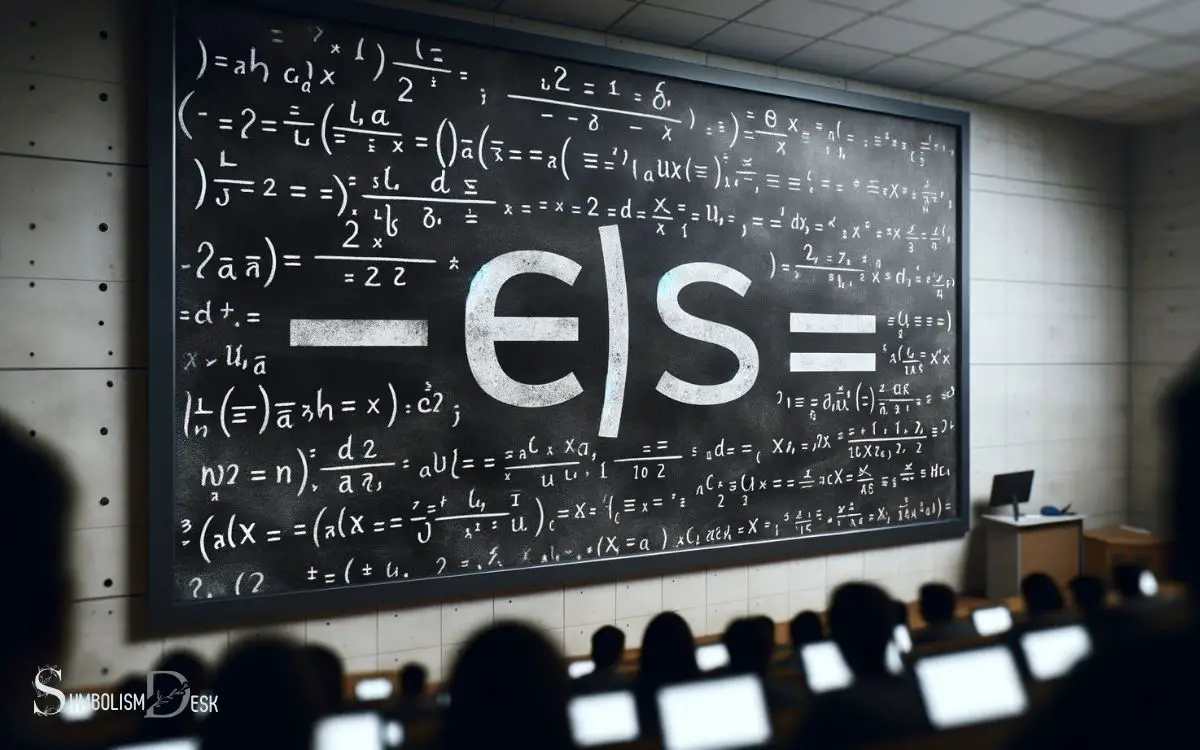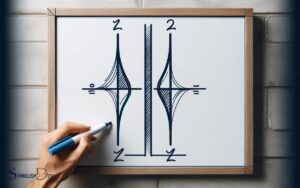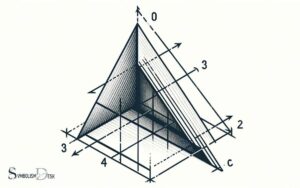Less Than Symbol in Math: Quantities!
The less than symbol in mathematics is “<“. It is used to indicate that one number is smaller than another number. For example, 3 < 5 states that 3 is less than 5.
The less than symbol (“<“) plays a crucial role in comparing numbers, quantities, or expressions. In math, it is used to show an inequality where the value on the left side is smaller than the value on the right side.
Here’s what you need to know about the less than symbol:

Key Takeaway
The Origin of the Symbol
The origin of the less than symbol in mathematics traces back to the development of mathematical notation in ancient civilizations. It is commonly believed that the symbol < was introduced by the English mathematician Thomas Harriot in the early 17th century.
However, its conceptual basis can be traced to the work of ancient mathematicians and philosophers such as Euclid and Pythagoras.
The symbol itself represents the inequality between two numbers or quantities, indicating that the number on the left is smaller than the number on the right.
This fundamental concept of relative magnitude has been integral to mathematical reasoning for centuries and continues to play a crucial role in various mathematical disciplines, including algebra, calculus, and statistics.
The less than symbol is a key component of mathematical language, facilitating clear and concise communication of mathematical relationships.
Meaning and Interpretation
The ‘less than’ symbol in math serves as a symbolic comparison representation, indicating that one value is smaller than another. It is a fundamental mathematical inequality notation used to express relationships between numbers or variables.
Understanding the meaning and interpretation of this symbol is crucial for accurately solving and interpreting mathematical equations and problems.
Symbolic Comparison Representation
How does the less than symbol in math represent symbolic comparison and what is its interpretation?
The less than symbol (<) in math is used to symbolically represent a comparison between two quantities.
Its interpretation is based on the concept that the value on the left side of the symbol is smaller than the value on the right side. This symbolic representation is crucial in mathematical equations, inequalities, and comparisons.
Understanding the interpretation of the less than symbol is important for various mathematical applications, including:
- Comparing numerical values: The symbol is used to indicate that one value is less than another.
- Formulating inequalities: It is utilized to express that one quantity is smaller than another in an inequality.
- Describing mathematical relationships: The symbol helps to convey the relative magnitude of different quantities in mathematical expressions.
Mathematical Inequality Notation
Symbolic comparison representation is integral to mathematical inequality notation, which serves to convey relationships between quantities and their relative magnitudes.
In mathematical inequality notation, the symbols “<” (less than), “>” (greater than), “≤” (less than or equal to), and “≥” (greater than or equal to) are used to express the relationship between two quantities.
The symbol “<” denotes that the quantity on the left is less than the quantity on the right. Similarly, the symbol “>” signifies that the quantity on the left is greater than the quantity on the right.
The symbols “≤” and “≥” denote that the quantities on both sides are either less than or equal to, or greater than or equal to, each other, respectively.
Understanding these symbols is crucial for interpreting and solving mathematical inequalities, as they form the basis for comparing and analyzing quantities in various mathematical contexts.
Application in Inequalities
When solving mathematical inequalities, the less than symbol (<) is used to represent a relationship where one quantity is smaller than another.
The application of the less than symbol in inequalities is crucial in various mathematical contexts:
- Number Line Representation: Inequalities involving the less than symbol can be represented on a number line, with an open circle on the smaller value and an arrow pointing towards larger values.
- Solving Linear Inequalities: When solving linear inequalities, the less than symbol dictates that the solution lies to the left of the inequality symbol on the number line.
- Real-World Problem Solving: Inequalities using the less than symbol are frequently used to model and solve real-world problems, such as budgeting, resource allocation, and optimization.
Comparisons and Orderings
Understanding comparisons and orderings is crucial in mathematics as it allows for the analysis of relationships between different quantities. In math, order relations play a significant role in establishing the magnitude and direction of values, providing a framework for comparison.
This understanding is fundamental for solving equations, inequalities, and making informed decisions based on numerical data.
For Comparison
Frequently, the less than symbol in math is used to compare the relative magnitudes of two quantities, indicating that the first quantity is smaller than the second. Understanding ‘greater than’ is equally important, as it allows us to compare the relative magnitudes in the opposite direction, indicating that the first quantity is larger than the second. Both symbols are essential in mathematical comparisons and can help us make sense of the relationships between different quantities. By mastering the meanings of these symbols, we can better understand and communicate mathematical concepts.
When using the less than symbol for comparison in math:
- The symbol “<” denotes that the value on the left is less than the value on the right. For example, 5 < 8 means 5 is less than 8.
- In comparisons, the less than symbol helps establish order and hierarchy among numbers or variables.
- When comparing quantities, it’s crucial to understand the directionality of the less than symbol to ensure accurate interpretations and solutions.
Understanding the usage of the less than symbol for comparison is fundamental for comprehending mathematical relationships and making informed decisions based on comparative magnitudes.
Understanding Order Relations
Often, understanding order relations in mathematics involves examining the comparisons and orderings between quantities or variables. In mathematics, order relations are used to compare the magnitude of numbers or variables.
The most common order relations are less than (<), greater than (>), less than or equal to (≤), and greater than or equal to (≥).
These relations establish the hierarchy of numbers or variables based on their magnitudes. When comparing two quantities, it is essential to understand the principles of order relations to determine their relative positions.
Order relations are fundamental in various mathematical concepts, including inequalities, number lines, and solving equations.
Mastery of order relations is crucial for effectively interpreting mathematical problems and making logical deductions based on the relationships between quantities or variables.
Importance in Math
An essential aspect of mathematics is the use of order relations to compare and establish the hierarchy of numbers or variables based on their magnitudes.
The importance of order relations in math lies in:
- Comparisons: Order relations, including the less than symbol, <, are crucial for comparing numerical values or variables to determine which is greater or lesser.
- Establishing Orderings: They allow for the arrangement of numbers or variables in ascending or descending order, providing a clear understanding of their relative magnitudes.
- Logical Reasoning: Order relations facilitate logical reasoning processes, enabling mathematicians to make deductions and draw conclusions based on the order and relationships between numbers or variables.
Understanding the importance of order relations is fundamental in various mathematical concepts and real-world applications, providing a basis for comparisons and decision-making processes.
Representing Mathematical Relationships
The less than symbol in math is a quantifier determiner that represents mathematical relationships between two quantities. It is used to compare values and express the relationship where one quantity is smaller than another.
This symbol is essential for indicating inequalities and establishing the relative size of numbers or variables. When solving equations and inequalities, the less than symbol plays a crucial role in determining the correct order of values.
For instance, in the inequality 5 < 8, the symbol effectively communicates that 5 is less than 8. This representation of mathematical relationships is fundamental in various mathematical concepts, such as algebra, calculus, and geometry.
Understanding and utilizing the less than symbol is integral to accurately interpreting and solving mathematical expressions and equations.
Use in Equations and Expressions
When using the less than symbol in math to represent inequalities in equations and expressions, it is important to maintain precision and clarity in mathematical comparisons.
Here’s how to utilize the less than symbol effectively:
- In Equations: When using the less than symbol in equations, place it between the quantities being compared. For example, in the equation 3x < 15, the less than symbol indicates that 3x is less than 15.
- In Expressions: In algebraic expressions, the less than symbol can be used to show the relationship between two expressions. For instance, when comparing x and y in the expression x – y < 10, the less than symbol denotes that x minus y is less than 10.
- Graphical Representation: The less than symbol is also used in graphing inequalities to represent the shaded region below a certain line on a coordinate plane.
Understanding the precise usage of the less than symbol in equations and expressions is fundamental for solving mathematical problems logically and accurately.
In the subsequent section, we will address common misconceptions related to the less than symbol in math.
Common Misconceptions
Despite its seemingly straightforward representation, misconceptions surrounding the less than symbol in mathematics are not uncommon. One common misconception is the belief that the less than symbol always points to the smaller number.
In reality, the symbol indicates the relationship between two numbers, with the open end facing the larger number. This misunderstanding can lead to errors in comparing quantities.
Another misconception is that the less than symbol is the same as the “subtract” operation. This is incorrect; the symbol denotes comparison, not subtraction.
Additionally, some mistakenly believe that the less than symbol can be reversed without consequence, which is not the case.
Understanding these misconceptions is crucial for accurately interpreting and using the less than symbol in mathematical contexts.
Conclusion
The less than symbol in math has a rich history and a wide range of applications in representing mathematical relationships, inequalities, and orderings. Its use in equations and expressions is essential for conveying precise mathematical information. The symbol is universally recognized and plays a pivotal role in comparing values, often helping to determine which quantity is smaller. In mathematical contexts, phrases like no less than meaning math emphasize the importance of boundaries or minimum values, implying that a quantity must not fall below a certain threshold. This concept is crucial in areas such as algebra, calculus, and programming, where inequalities define constraints and solutions.
However, there are common misconceptions about its interpretation and application. Understanding the origins and meanings of this symbol can enhance our mathematical comprehension and problem-solving abilities.






